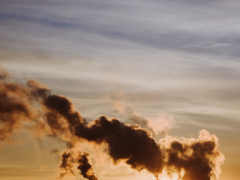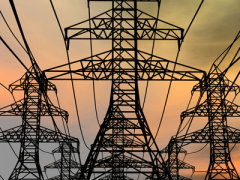Delaying substantial emission reductions limits climate policy choices
If fast and substantial reduction in greenhouse gas emissions is postponed further, there are fewer options available to stay below the 2 °C warming target for the end of the century. Delayed action is likely to require measures that remove CO2 from the atmosphere by planting forests and using bioenergy in combination with carbon capture and storage. The latter technique still involves considerable challenges. Climate policy decisions over the next decade will determine the level of global dependency on such carbon-negative solutions.
This is the main conclusion of the study ‘Implications of long-term scenarios for medium-term targets (2050)’ by PBL Netherlands Environmental Assessment Agency, published today. At the request of the Norwegian Environment Agency, PBL assessed how cuts in emissions before 2050 will affect the policy measures that will be necessary in the second half of the century to limit global warming to 2 °C above pre-industrial levels.
Several policy proposals have indicated that the world must reduce greenhouse gas emissions by 40% to 70% by 2050, compared to 2010 levels, for temperature increases to be likely to stay (with a 66% chance) below 2 °C, quoting the recent IPCC report. However, this wide range of 40% to 70%, to a considerable extent, is a reflection of policy choice. Policy strategies that do not want to rely on removing CO2 from the atmosphere should be at the higher reduction end (60-70%) of the range. This is illustrated by the observation that scenarios reflecting such strategies show emission reductions of more than 60% by 2050.
Fewer reductions now = more later
The Intergovernmental Panel on Climate Change (IPCC) stated in its Fifth Assessment Report that the world must reduce greenhouse gas emissions by 40% to 70% by 2050, compared to 2010 levels, for temperature increases to be likely to stay (with a 66% chance) below 2 °C. In the scenario database assessed by IPCC, just over 100 scenarios result in a global mean temperature increase of below 2 °C by the end of the century, and they are thus in line with the so-called low-emission pathway from the Fifth Assessment Report (RCP 2.6). The assessment of these scenarios showed that those with reduction levels of 40% to 60% by 2050, relied on negative emissions in the period after 2050 in order to reach the emission levels required to stay below 2 °C by the end of the century. The scenarios that would reduce emissions by more than 60% by 2050, did not include negative emissions. In other words, lower reductions before 2050 require more substantial reductions and negative emissions in the last half of the century.
Fast action provides a greater freedom of choice
Continuing high emission levels over the next few years will make the world more dependent on large-scale implementation of negative-emission measures to limit warming to two degrees in the longer term. This can be attractive to allow for a smooth transition in the short term, but would also imply a faster and more demanding readjustment in the middle and latter part of the century. Fast and substantial emission reductions will give greater flexibility for the preparation of policy choices and strategies and a more gradual readjustment, as we approach 2050.
Negative emission options pose challenges
Bioenergy with carbon capture and storage (BECCS) is an important element in a future energy system, but there are considerable challenges relating to the effects of land use. One example is that lack of suitable storage capacity for CO2 and social acceptance may limit the use of BECCS in some countries. Identifying the full potential for BECCS and the relationship with reduction targets in the short and medium term (for example 2050) would require further assessment.
The carbon budget can be exhausted quickly
According to the IPCC, cumulative future CO2 emissions must be limited to a carbon 'budget’ of approximately 1,000 billion tonnes to keep global warming below 2 °C. If the world’s emissions continue to increase rapidly and follow the highest emission pathway of the IPCC, the PBL analysis suggests the world will have spent 70% of the 2 °C carbon budget by 2030 – i.e. within the next 15 years.
More infomation
- The work was funded by the Norwegian Environment Agency. A draft was presented during a seminar organised by the Norwegian Environment Agency on 20 November 2015
- Video of the seminar




